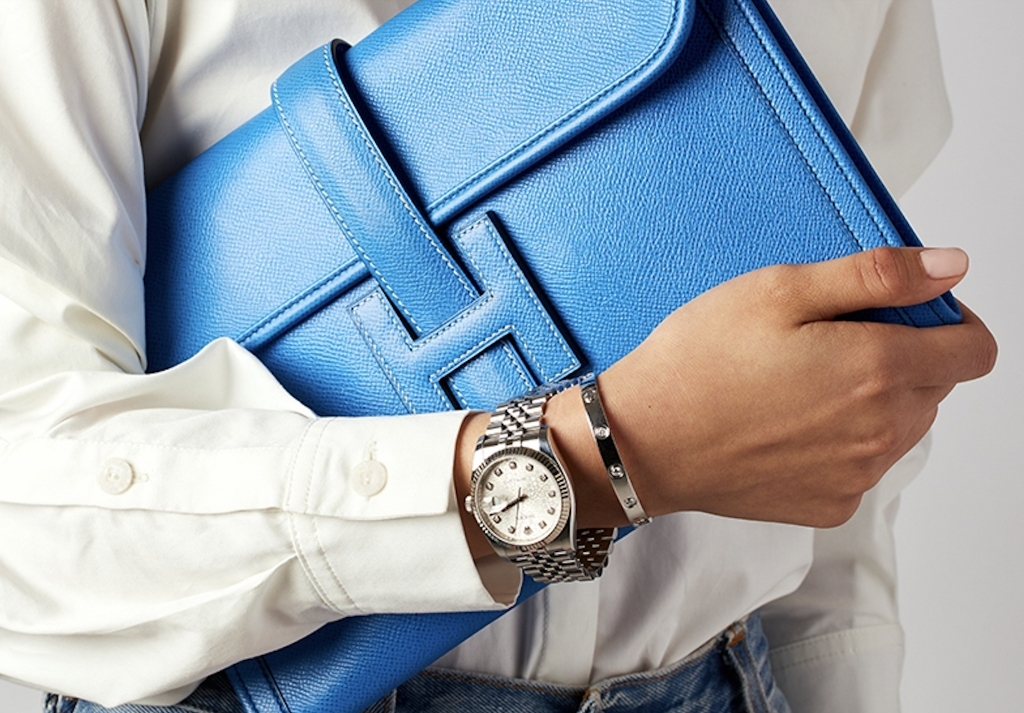Sales are not only rebounding for luxury names like LVMH, Kering, and Hermes. The resale market is bouncing back from sweeping COVID-induced slumps, with The RealReal reporting $98.8 million in sales for the three-month period ending in March 31, an increase of 27 percent on a year-over-year basis. In its Q1 report this week, The RealReal revealed that in addition to boosted sales, its gross merchandise value – a “key” metric for the company that reflects the total value of the pre-owned luxury goods sold for the period – was also up 27 percent compared to Q1 in 2020 (and way up from the 1 percent decline the company saw in Q4), resulting in its “highest quarterly gross merchandise volume” to date.
The RealReal (“TRR”), which holds the title of the world’s largest online marketplace for pre-owned luxury goods, provided some other insight into operations (and potentially, shed light on the broader secondhand market more generally) by way of its quarterly report, stating that in Q1, a large number of new consignors entered into the fray. The San Francisco-based company says that it “added the greatest quarterly number of new consignors to its marketplace to date, and, as of April, surpassed the milestone of $2 billion in cumulative consignor commission payouts.”
In terms of buyers, TRR stated that for the March 2020 to March 2021 period, the number of “active buyers” reached 687,000, an increase of 14 percent on a year-over-year basis. In terms of new buyers, that number was up by 34 percent for Q1 versus Q1 in 2020 (and compared to an increase of 21 percent in Q4), while the total number of orders reached 690,000, an increase of 20 percent. And still yet, while the average units per transaction dropped by 4 percent in Q1, the average order value (“AOV”) grew by 6 percent to $474, seemingly indicating that consumers are buying less – but more expensive offerings. The “primary driver” of the higher AOV, according to TRR? “A 10 percent year-over-year increase in average selling price,” due to “strength in the Fine Jewelry category and strong demand in high-value handbags.”
Reflecting on its store strategy, which has seen the company opening “smaller footprint neighborhood stores” that enable it “to engage with its most valuable customers,” TRR says that it is on track to operate a total of 10 stores by the end of Q2, having opened stores in Brooklyn, New York, Newport Beach, California, and Greenwich, Connecticut, in Q1 and expanding to Texas with locations in Austin and Dallas in Q2. In the report, the company spoke to the strength of the store, stating that in Q1, buyers who purchased in-store spent 4.4 times more compared to online-only buyers and generated AOVs that were approximately 2.6 times higher than online-only buyers.
In a corresponding conference call, TRR founder Julie Wainwright said that the neighborhood stores “are exceeding our expectations, both with demand and also supply … [and] we are so encouraged that we’re actually going to open 3 more than we originally planned this year.” She noted that “there are still lines outside the stores to get in,” with people willing to wait “because they either want to shop or consign,” and asserted that the stores “are absolutely helping a meaningful share of our new consignors and a significant number of new buyers are coming through our stores.”
Addressing the question about “when will apparel return,” Wainwright stated that apparel “did show growth in Q1, [but] it is just not growing – and is still not part of the mix – [in the same way] as it was prior to COVID.” In other words, “Apparel is up. It is just not as up as much as fine jewelry, handbag and watches,” with TRR customers’ purchases shifting to “more high value items.” Similarly, “shoes are down, but showing growth.”
Another point that garnered attention during the analyst call: the reintroduction of at-home visits, in which TRR allows consignors with 10 items or more to schedule a pick-up at their homes. TRR CFO Matt Gustke, who recently announced that he will leave the company, said that while it is “still very early days” in terms of the offering of at-home pickups post-COVID, “We are seeing good indications that there is a lot of pent-up supply.” Wainwright echoed this, saying that “prior to COVID, an in-home pickup yield [would be] between 17 and 20 units per pickup. Now it can be, on average, 30 units,” and that is expected to “continue ramping throughout the balance of this year and beyond.”
Looking ahead, TRR expects its Q2 gross merchandise value to be “in the range of $320 million to $330 million, representing 75 percent to 80 percent year-over-year growth.” The company’s execs also revealed on the call that it is still eyeing international expansion, as previously discussed. Wainwright said, “We still have 2022 in our crosshairs for some international small expansion,” noting that such plans will “most likely move to the latter half of that year” without elaborating further.













